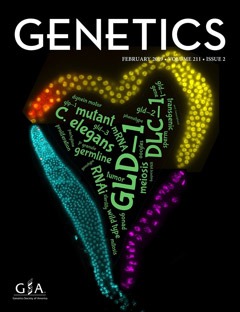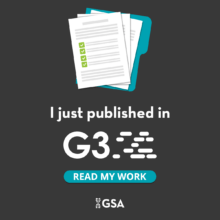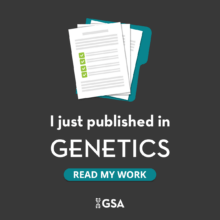Promotional Toolkit for Authors
Congratulations on publishing with the GSA Journals! We’re excited to have you as part of our author community and want to ensure your work finds the right audience.
In the days of print journals, it was common for scientists to find papers of interest simply by scanning the Table of Contents of the newest issue. In our digital age, however, it’s a greater challenge to get relevant papers into the hands of interested readers.
Authors and publishers do, however, have access to a number of online platforms that can help get new papers in front of as many interested scientists as possible. Here is some information to help you promote your recent GENETICS or G3: Genes|Genomes|Genetics paper, including how the Genetics Society of America (GSA) and Oxford University Press (OUP) can help.
Note: Inclusion of resources on this page does not constitute endorsement by GSA.
General Information
Our Mission to Promote Your Work
GSA and our publishing partner OUP work together to make your science as visible as possible.
Our production workflows follow best practice in the field to ensure your article is properly tagged with metadata and indexed at PubMed and other databases. OUP shares articles via email through Advance Access digests and the eTable of Contents for each issue. GSA highlights articles in the bi-weekly e-News. Both GSA and OUP share issues and individual articles on our social media platforms; sharing your social media handles during the submission process lets us tag you as appropriate. GSA also commissions posts covering some articles for our blog, Genes to Genomes.
>>Sign up for email alerts from OUP here and for the GSA e-News here.
>>Browse coverage of primary research articles published in the GSA Journals at Genes to Genomes.
Writing Tips
No matter where you’re promoting your paper, it’s important to set the stage to draw readers in. Consider questions like: What’s the larger context for your work? Why is this area so interesting to you? What would make it interesting to someone outside the field? What were your major findings? How does your work advance scientific understanding? Write a few sentences to answer these questions, and focus on aiming them at the audience you most want to reach. If you want to reach the general public, tailor your language to a fitting reading level.
Do your best to avoid jargon, and define any specialist acronyms that must be used. Be careful not to overstate your conclusions. Be concise, and let your personality show in your writing. Overly impersonal writing is often less successful in connecting with an audience.
Media Coverage
Press releases through science news platforms like AAAS’s EurekAlert! are an excellent way to get your work in front of national and international audiences. If your institution has a press office with Public Information Officers (PIOs), they can help you navigate media coverage of your work, including gauging whether a press release is appropriate for your work and writing said piece. These tips for writing a press release by the American Society for Biochemistry and Molecular Biology may be useful to you. We also recommend sharing your PIO’s contact information with the Editorial Office so we can coordinate directly with them.
If you or your institution plan to issue a press release about your paper, please inform us as soon as possible so we can incorporate it into our promotional plans. This is especially important if an embargo is needed; the sooner the Editorial Office knows about your plans, the better we can support them. We can then amplify the press release on social media and reproduce it on Genes to Genomes for additional visibility.
>>Contact the GENETICS Editorial Office.
>>Contact the G3: Genes|Genomes|Genetics Editorial Office.
Other Online Venues
Personal Websites
Take a moment to update your department, lab, and personal websites when you’ve published a new paper. We recommend using the DOI link so that users are always directed to the most current version of your paper.
Email Signature
An often-overlooked option for promoting your work is your email signature. If your institution’s email governance allows for it, add a link to your new paper to your standard email signature. You can also include an author graphic.
Listservs and Newsletters
If there are listservs or newsletters within your field that share recent publications on relevant topics, consider submitting your paper to them.
Wikipedia
If your work presents new insights into a biological process or organism that has a page on Wikipedia, consider adding a sentence to that page and citing your paper. We especially encourage our G3 Genome Report authors to do this.
Media Gallery
















Social Media
One of the simplest ways to spread the word about your research is taking advantage of social media platforms. While the social media landscape is constantly evolving, here are tips for making a splash:
Take advantage of the graphics GSA has prepared to add visual interest to your posts.